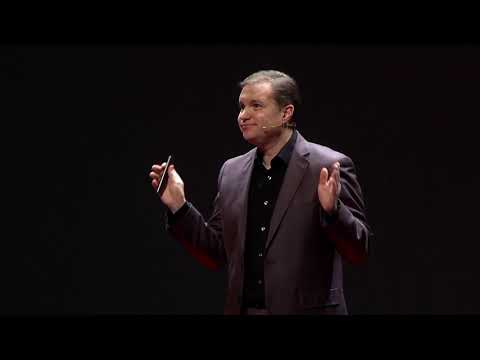Public speaking innovation has become a game-changer in how we communicate and engage with audiences. In our fast-paced digital age, sticking to the old methods simply won’t cut it. Today’s audiences crave content that’s fresh, interactive, and memorable. To successfully captivate your audience, let’s dive into seven critical innovations that can drastically elevate your public speaking effectiveness. Are you ready to transform your speaking style and make lasting connections? Let’s go!

1. Embracing Interactive Technology to Engage Audiences
Engagement is the name of the game in today’s presentations. Interactive technology is your best ally in this quest. Think about how TED talks have transformed public speaking. They often use platforms like Slido and Poll Everywhere, allowing real-time audience feedback. This two-way dialogue makes everyone feel included and invested in the journey. Imagine at a TEDx talk, where the crowd influences the conversation’s direction through live polls—just think of the energy that creates!
Key Takeaways:
– Utilize real-time polling for immediate audience feedback.
– Use interactive Q&A sessions to create dialogue.
– Encourage participation through technology to foster an immersive experience.

2. Storytelling Through Multimedia
Now, let’s talk about the magic of storytelling. Effective storytelling comes alive when paired with multimedia. Take Brené Brown, for example. She brilliantly integrates visuals and emotional narratives in her talks, making complex topics relatable. Did you know presentations with images are 43% more effective in audience retention? This is a sure-fire way to resonate with audiences. Turn your facts into stories; they’ll remember the story long after the facts fade.
Key Ingredients:
– Combine visuals, videos, and narratives for maximum impact.
– Structure stories for emotional engagement.
– Be relatable—find common ground with your audience.

3. Harnessing Data Visualization for Clarity
When it comes to explaining complex ideas, data visualization can be your secret weapon. Hans Rosling, the late public speaker and statistician, mesmerized audiences using engaging data visuals. Whether you choose Tableau or Google Data Studio, presenting data compellingly can simplify understanding. Everyone loves a good story, but numbers can tell a captivating tale too—make them pop with visuals!
Best Practices:
– Use colorful charts and graphics to highlight key data.
– Turn raw data into storytelling devices.
– Create compelling narratives from statistics.

4. The Power of Personal Branding
Your personal brand sets you apart in a crowded marketplace. Look at Simon Sinek; his “Start With Why” philosophy carries through every aspect of his work. This kind of consistency fosters an identifiable persona that resonates deeply with audiences. It’s critical to develop a solid personal brand that enhances your visibility and builds trust. Consider your unique value proposition—what makes you stand out from the crowd?
Essential Strategies:
– Clarify your unique message or position.
– Maintain brand consistency across every platform including your website and social.
– Utilize storytelling to convey your brand ethos.

5. Utilizing Virtual and Augmented Reality (VR/AR)
Ready to take your presentations to another level? It’s time to explore VR and AR. Companies like Magic Leap are leading the way, creating immersive experiences that make concepts come alive in three dimensions. Kevin Kelly has effectively showcased futuristic tech trends using VR. Imagine giving a presentation where your audience can visualize your ideas firsthand—talk about innovation!
Steps to Implement:
– Explore VR tools like Oculus or AR apps to enhance your narratives.
– Use immersive tech to create experiences that set you apart.
– Seek partnerships with tech companies for resources and support.
6. Networking Through Social Media Before, During, and After Events
Social media is your best friend in the current speaking landscape. Gary Vaynerchuk illustrates this perfectly; he builds buzz for his talks on platforms like Instagram and Twitter. Pre-event engagement helps set the stage for a memorable experience, while post-event outreach creates a community that can extend well beyond one talk. Your goal? Start the conversation early and keep it going!
Tactical Moves:
– Create a hashtag for your event to engage followers.
– Share behind-the-scenes content during your preparation.
– Seek feedback post-event to build rapport and improve.
7. Adapting to Micro-Credentials and Shortform Content
Given today’s shorter attention spans, micro-credentials and bite-sized content are the keys to reach broader audiences. Nancy Duarte is a shining example of this approach. She often breaks long presentations into short, key segments. Why not try leveraging platforms like TikTok? Offering snippets of your expertise can effectively engage a vast audience.
Action Items:
– Craft short videos with impactful messages for social sharing.
– Break longer talks into digestible segments that highlight key takeaways.
– Experiment with different formats to see what resonates most.
Innovative Wrap-Up: Pioneering the Future of Public Speaking
As we adapt to the fast-paced advancements in communication, public speaking innovation is crucial for captivating audiences. By embracing these innovations—interactive technology, multimedia storytelling, data visualization, effective personal branding, VR/AR experiences, social media engagement, and the rise of micro-content—you position yourself to not just speak but to inspire. True influence comes from connecting deeply, and those who innovate are the ones who will lead the way.
So, gear up, get innovative, and start captivating your audience like never before! Let’s ignite the fire within; your voice matters, and the world awaits your unique message.
Are you ready to unleash your power through public speaking innovation? For more on speaker branding, check out our resource on branding For Speakers, discover tools for Ai-driven speech Insights, and ensure your personal brand consistency.
Get out there and make your mark; the stage is set, and your audience is ready to be captivated!
Public Speaking Innovation: Secrets to Captivating Audiences
The Evolution of Public Speaking
Public speaking innovation doesn’t just pop up overnight; it’s a journey that’s been evolving for centuries! Take a trip back in time: the ancient Greeks introduced rhetoric as an art form. Fast forward to today, and we see remarkable shifts in how speakers engage with their audiences. For instance, modern speakers often blend storytelling with data, finding hope support group brainstorming sessions, like those from Mother’s Against Addiction, create engaging content that resonates emotionally.
As you dive into this intriguing landscape, it’s fascinating to note the technological advancements that have revolutionized presentations. With tools like dynamic visual aids, speakers can captivate their audiences within minutes. Did you know Kyle Hooper, among others, successfully integrates the latest tech trends into his talks? This helps him resonate with diverse audiences while keeping the energy alive. Visual elements can jumpstart engagement, sometimes more than just facts and figures on a chart or debating mortgage rate variations on your monthly payment.
The Impact of Storytelling in Speeches
Stories are the bedrock of any great speech, weaving a narrative that can make information something people care about. The power of storytelling lies in its ability to convey complex ideas, leaving room for humor and personal anecdotes. Unexpected details, like the appraisal value Of house settings in a local neighborhood, invite audiences to think differently. By painting a vivid picture, speakers hook their listeners, drawing them into their narrative journey—after all, who doesn’t love a good story?
Moreover, there’s a movement towards authenticity in public speaking. Speakers are now encouraged to tap into their vulnerabilities. This opens the door for discussions about beliefs and challenges, making it relatable. Ever heard of Baphomette? Odd as it may seem, its inclusion in conversations can lead to fascinating dialogues, breaking barriers and inviting audience interaction. Innovation in public speaking thrives in such unexpected tangents, creating memorable moments that stick with audiences long after the applause fades.
In a nutshell, public speaking innovation is about staying relevant and relatable. By harnessing storytelling, technology, and authenticity, speakers can captivate any audience. It’s this blend of engagement tools and personal touches that guarantees they’ll not only communicate their message but resonate on a much deeper level.

What are the 5 P’s of public speaking?
The 5 P’s of public speaking are Planning, Preparation, Practice, Performance, and Passion. By focusing on these aspects, you can create a more engaging and memorable speaking experience for your audience.
What are the 7 P’s of public speaking?
The 7 P’s of public speaking include pronunciation, pace, pause, punch, power, passion, and posture. Mastering these elements can help you deliver your message effectively and keep your listeners engaged.
What are the 4 P’s of public speaking?
The 4 P’s of public speaking refer to Projection, Pace, Pitch, and Pauses. By learning to control and vary these aspects of your voice, you can captivate your audience and enhance your speech’s overall impact.
What is invention in public speaking?
Invention in public speaking is the initial stage where you brainstorm, research, and decide on your speech’s content. It’s about figuring out what you want to say before you dive into writing your speech or essay.
What are the 7 C’s of public speaking?
The 7 C’s of public speaking are clear, concise, concrete, correct, coherent, complete, and courteous. Using these principles helps ensure that your message is understood and well-received by your audience.
What are the 3 C’s of public speaking?
The 3 C’s of public speaking are clarity, confidence, and connection. These elements help you engage with your audience and get your message across effectively.
What are the three golden rules of public speaking?
The three golden rules of public speaking are to know your audience, keep it simple, and practice, practice, practice. Following these rules can greatly improve your delivery and impact.
What are the 5 C’s of public speaking?
The 5 C’s of public speaking include clarity, content, confidence, charisma, and connection. These components help you to engage your listeners and deliver your message more powerfully.
What are the six rules of public speaking?
The six rules of public speaking are know your audience, structure your speech, practice delivery, use body language, manage your visuals, and handle questions effectively. Sticking to these guidelines can really up your speaking game.
What are the 3 S’s of public speaking?
The 3 S’s of public speaking stand for speaker, subject, and style. These basics are crucial in developing an engaging and relatable presentation.
What are the 3S of public speaking?
The 3S of public speaking often refers to simplicity, sincerity, and strong visuals. Keeping these front of mind can help make your message clearer and more compelling.
What is the 4S strategy in public speaking?
The 4S strategy in public speaking typically involves structure, signposts, storytelling, and summary. This approach can help keep your audience engaged and make your message stick.
What is 1 invention that impacted communication?
One invention that impacted communication is the printing press. It revolutionized the way information was shared and made written texts more accessible to the masses.
What is the main idea of public speaking?
The main idea of public speaking is to effectively communicate your message to an audience, aiming to inform, persuade, or entertain. It’s all about sharing ideas and connecting with people.
What are the 5 topics of invention?
The 5 topics of invention include definitions, comparisons, relationships, circumstances, and testimony. These areas can help you brainstorm and develop content for your speeches.
What are the 5s of public speaking?
The 5 S’s of public speaking typically refer to structure, skill, story, spirit, and stage presence. Focusing on these can transform your speaking approach and engagement with the audience.
What does the 5 P’s stand for in communication?
The 5 P’s in communication stand for Planning, Preparation, Practice, Presentation, and Passion. These key points help you deliver effective messages that resonate with listeners.
What are the 5 Ps presenting?
The 5 P’s in presenting stand for Planning, Preparation, Practice, Performance, and Passion. Emphasizing these elements can lead to delivering impactful presentations.
What does the 5 P’s stand for?
The 5 P’s stand for Planning, Preparation, Practice, Performance, and Passion. These foundational concepts can help you become a more effective and influential speaker.









